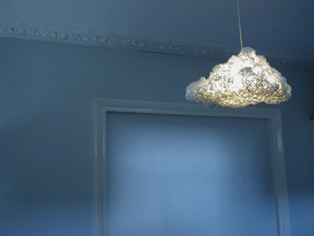Throughout A level art I had a mix of both art and design elements in my work. I mainly worked in 3D with sculpture or installation and often made mini models of what my final outcome was going to be. By the end of year 13 my work had moved away from a fine art approach. However, until now I never fully exploited the design side of my working process.
I was really pleased when my first rotation was 3D and spatial design because I felt it covered the areas I wanted to explore for potential BA courses. In the summer I was on a course with the Architecture Foundation where we were working in the Lee Valley and having had a taste of designing and problem solving in the built environment, I wanted to find out more about architecture. I really enjoyed the first two weeks and felt they confirmed 3D/Spatial as my chosen area. I thought I was going to find the time scale a bit daunting, but generating ideas quickly and having a very ‘hands on’ approach really suited my way of working. In fact the speedy rotations helped my work and outcomes- in the last few days of 3D the shapes and forms I had been developing came together quite easily and the outcomes almost started to create themselves. It was also my first real experience of working from a set brief. It gave me a glimpse into the world of a designer and their task of creating for a client whilst still putting a personal stamp on their work.
I gained a lot from the other areas as well. I did a lot of animation in fine art, which I had never done before and in vis com I liked the freedom we were given to express ideas. I was really surprised by fashion and textiles because I though it would be the area I was going to take to least, but I thought it had lots in common with 3D. However, my ideas felt less direct and resolved than in 3D and I found it took longer for them to gain momentum- I think this is because of the context in which my ideas were taking shape, I couldn’t decide whether to concentrate on textiles and materials or fitting my pieces around the body.
I learnt a lot from all the rotations and they showed me how, whatever the project, you can cater it to your way of thinking and working. I used the areas to experiment with different techniques, but as I knew architecture was something I was interested in, all my pieces started (maybe subconsciously) to take on a structural or modular character.
 |
| A sketch by the architect Santiago Calatrava. I really like his approach to design. From looking at his buildings you can see his sources of inspiration are really varied, but his style stays consistently recogniseable- he takes alot from nature and the human body. For example the TGV station in Lyon, to me, resembles a spinal cord or the curved backbone of a fish skeleton. Photo found at http://cmuarch2013.files.wordpress.com/2009/07/calatrava-com-1-32.jpg |
I gained a lot from the other areas as well. I did a lot of animation in fine art, which I had never done before and in vis com I liked the freedom we were given to express ideas. I was really surprised by fashion and textiles because I though it would be the area I was going to take to least, but I thought it had lots in common with 3D. However, my ideas felt less direct and resolved than in 3D and I found it took longer for them to gain momentum- I think this is because of the context in which my ideas were taking shape, I couldn’t decide whether to concentrate on textiles and materials or fitting my pieces around the body.
 |
| These pieces are from 3D/Spatial (2nd pic) and fashion/textiles(1st). They show the similar process I took when I was generating ideas by cutting and folding paper. |
Work outside of the studio also helped me decide that 3D and spatial was the right area. The suggestions provided by contextual studies of work we could research were helpful. Some of the exhibitions I visited I didn’t find that inspiring. 100% design at earls court was a real let down as it showcased commercial, mainstream aspects of the design world- everything felt unaffordable and too polished and I couldn’t interact and involve myself in the ideas of the designers. But the Anti-Design festival was more interesting and Design 2010 at the design museum was great. I saw how design could be more about people and trying to “improve the little niggly everyday things” (said by Min-Kyu Choi who created the design of 2010, the folding plug). Recent lectures and seminars have helped me develop the way I think about art, design and the differences and similarities between them. I really liked the talk with Dominic Wilcox: his ideas were creative, experimental, funny and attempted to solve little problems I had never even thought about. I found it really inspiring to listen to somebody whose work refuses to settle into a specific category of art or design.
Overall, each rotation helped to convince me that a design route was right. I have learnt about generating ideas quickly, working to a brief, solving problems and interacting with different people and their ideas. I was worried that when picking a specialism I was going to have to sacrifice different processes I enjoy, but each area has emphasised how it’s important not to limit the way you approach projects. So in 3D I want to sketch, photograph, make models, experiment with texture, use all sorts of materials, but also introduce skills I’ve picked up on other rotations like film making and animation.
 |
| Dominic Wilcox's work, Nimbus. Picture from his website http://www.dominicwilcox.com/ |

.jpg)
No comments:
Post a Comment